What are suitable applications for press-fit carbon steel?
Steel is an incredibly versatile and useful material for piping solutions in a variety of applications. Steel’s properties including its strength, rigidity and relatively low cost make it a very popular choice for piping solutions across the globe. But not all steel is the same. Each different type of steel has its own unique characteristics, advantages, and applications. Carbon steel is just one type of the broader category of steel and is often preferred over other kinds of steel, but why is this? In this article, we’re going to explain just that. We’ll cover in, a general sense, what exactly carbon steel is and its benefits, then dive down into what key applications carbon steel using the press-fit jointing method is best suited toward. Simply read on to discover some important considerations for carbon steel pipework.
What is carbon steel?
Carbon steel is a specific type of steel that has a higher concentration of carbon, just as the name alludes to. Many steel types have a comparably low carbon content (roughly 0.05-0.3%), whereas carbon steel has a carbon content of up to 2.5%. This higher carbon content gives carbon steel an array of advantages that can’t be found in other types of steel. Carbon steel is ultimately an alloy of iron and carbon that has a slightly lower melting point and increased durability compared to other types of steel. Because of these properties, carbon steel is more suited to certain applications than conventional solutions.
Benefits of carbon steel piping
Speaking in general terms, carbon steel’s higher concentration of carbon lends itself to many benefits, the primary benefit being its increased strength. The higher level of carbon makes carbon steel stronger than conventional steel by re-shuffling its crystal lattice. When under immense pressure, carbon steel can still stress or break, however, this is far less likely to happen when compared to other types of steel. This is why carbon steel is often the favoured material choice for applications where a high level of strength is necessary. Since it is so strong, carbon steel pipe can be made thinner and use less material which enables easier handling and transport of high volumes of the material. In turn, this makes carbon steel piping a more cost-effective option for many situations. In addition, carbon steel is recyclable, so it’s environmentally friendly as well as being cost-effective. Carbon steel also provides safety and durability, key components of any piping project. It’s shock-resistant and isn’t as affected by harsh environmental conditions as other common piping materials. Being a relatively easy material to manufacture, carbon steel piping is incredibly versatile - it can be made to an assortment of thicknesses and dimensions, as well as being easy to cut and bend, making for a widely applicable and sought-after piping solution.
Best applications for press-fit carbon steel
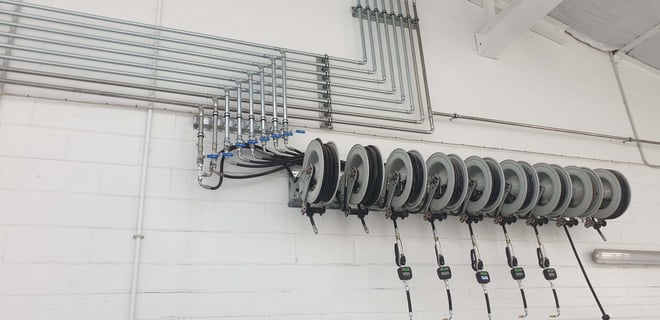
Firstly, it is important to note carbon steel pipework is available in both heavy-duty scheduled pipe as well as tubing. Scheduled pipe is typically used in high-pressure industrial applications and is joined using traditional welding methods. Press-fit, on the other hand, is available in carbon steel tubing, which in simple terms is a thin-walled tube suitable for specific lower pressure applications. In the Europress range of carbon steel press-fit, there are two types of tubing available:
- With a galvanised coating on the exterior of the tube.
- With a galvanised coating on both the exterior and interior, known as ‘Dual Coated’.
Given its susceptibility to corrosion, it’s important due consideration is given to each application. Some common applications we see for carbon steel pipework are closed-circuit heating systems, commercial, residential, and industrial fire sprinklers (wet systems only), automotive oil and lubricant lines, and compressed air.
Water lines
Before we look at these applications in more detail, let’s answer one common question we get asked: can press-fit carbon steel be used for a water line? The short answer is, it depends. If the water line is a closed-circuit system then yes it is suitable. That is if no freshwater or air coming into the system and therefore oxygen is kept out of the pipeline. If it is not a closed-circuit system then no, press-fit carbon steel is not suitable as it will be susceptible to corrosion. It is also recommended to use corrosion inhibitors in closed circuit piping systems, and care needs to be taken to ensure that these inhibitors are compatible with the o’rings. Tube with external coating only is recommended for these applications.
Heating systems
Press-fit carbon steel is suitable for heating systems in, for example, residential, commercial, or educational facilities. This is again assuming the system is closed-circuit and without air. For this application, it is recommended you use the tube with the coating on the exterior only. Along with the heating system, in many applications, there will be a cooling system. Most manufacturers of carbon steel press-fit tubing expressly emphasise the need for caution when using carbon steel press-fit tubing for cooling systems as condensation can be generated, and it is not possible to guarantee a completely reliable insulation, which in this application can present a risk of corrosion.
Fire sprinkler systems
Press-fit carbon steel can be used for commercial, residential, and industrial fire sprinkler systems assuming the system is a closed circuit. In this application, it is recommended that dual-coated tubing is used. It is also important to note that in this application, specific certification will be required to demonstrate compliance and fitness for purpose. Compliance will need to be verified with each manufacturer or supplier. The European VdS standard is a common standard looked for as is the AON approval in New Zealand. Some care needs to be exercised when installing press-fit carbon steel in industrial applications, particularly to the environment in which the tubing will be exposed. Some industrial environments can be corrosive in themselves which may leave the tubing vulnerable. In addition, industries such as the food and beverage industry will likely specifically require stainless steel for all piped services including fire sprinklers, particularly within the process areas. This is another example of where carbon steel press-fit wouldn’t be considered fit for purpose.
Automotive industry
In the automotive industry, workshops have several services including oil and lubricant, compressed air, and water. We touched on the suitability of carbon steel press-fit in water applications earlier and we will touch on compressed air shortly which leaves us with oil and lubricant lines. Firstly we should point out, oil and lubricant lines are often run at a pressure of up to 40 Bar (580 PSI) so it is critical to get manufacturer or supplier advice and guidance before using press-fit carbon steel for this application. This could include advice around pressure relief and the appropriate tooling for applications of pressures this high, as temperature fluctuations can cause large additional spikes in pressure, over and above the system operating pressure. Press-fit is normally pressure rated to a standard 16 Bar (232 PSI), however, systems such as Europress have been approved for up to 40 Bar for this specific application up to 42mm. In this application, it is recommended you use the tube with the coating on the exterior only. It is also critical that the correct o’ring is used for oils, so care is needed to ensure compatibility.
Compressed air
This leaves us with compressed air. Yes, carbon steel tubing can be used for compressed air applications, keeping in mind the pressure capabilities of the system. For this application, it is recommended you use dual-coated tubing. When using carbon steel press-fit tubing for compressed air applications, a system dryer must be installed to prevent moisture from entering the system. Should moisture enter the system, corrosion could occur. The black EPDM o’rings should be replaced with green Viton o’rings if the amount of residual oil is ≥ 5 mg/m3. We recommend replacing the EPDM o’rings for all compressed air applications to future proof your system.
While we are on the subject of where carbon steel press-fit tubing can and cannot be installed, it should be pointed out, the ideal environment for this tubing to be installed is in a clean and dry atmosphere. Care needs to be taken to protect the pipework should it be installed outdoors and in an environment where condensation can form on the pipework as this can be a cause for corrosion. In fact, we would recommend avoiding installing carbon steel press-fit outdoors or in a damp environment.
All in all, carbon steel is an excellent, strong, and often lower-cost option for many applications including heating, fire sprinkler, oil and lubricant, compressed air, and more. Using it for your next piping project can bring many advantages such as strength, durability, cost-effectiveness, and environmental-friendliness. It’s a popular choice for a reason. As a result, Waterworks has a wide range of carbon steel piping products, as well as extensive expertise in helping clients implement it across their work. If you have any queries regarding carbon steel piping and its suitability for your next piping project, simply contact one of our friendly staff members today. Otherwise, feel free to browse our range of Europress carbon steel piping systems by clicking on the image below.

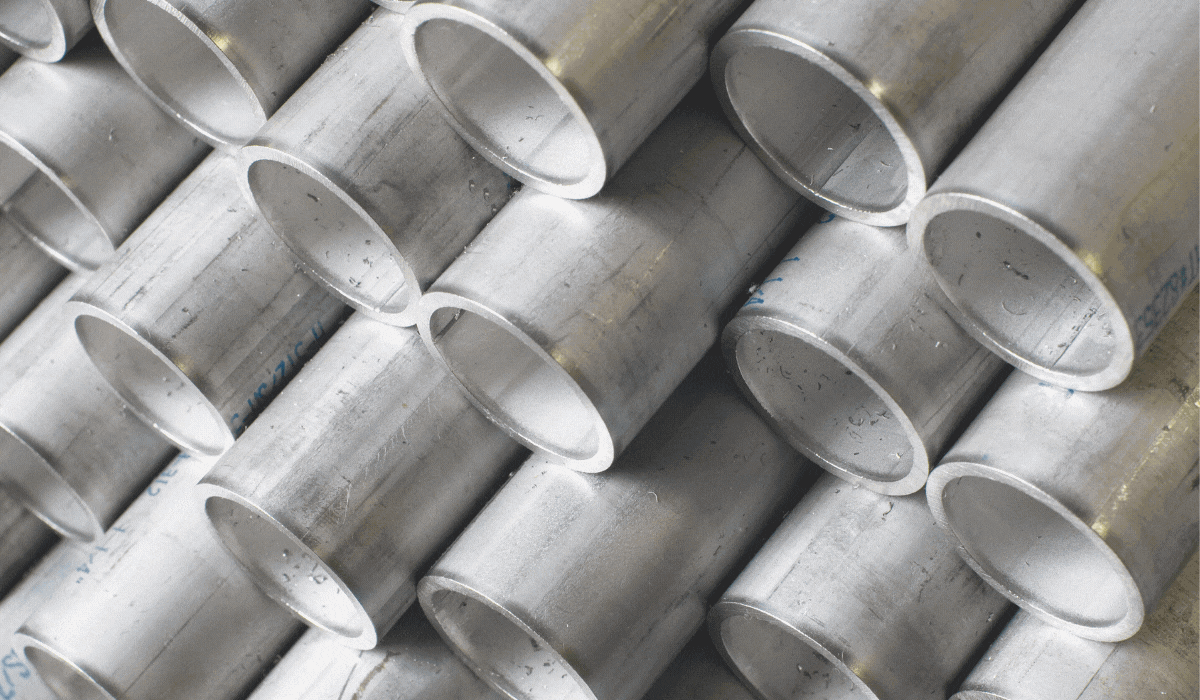
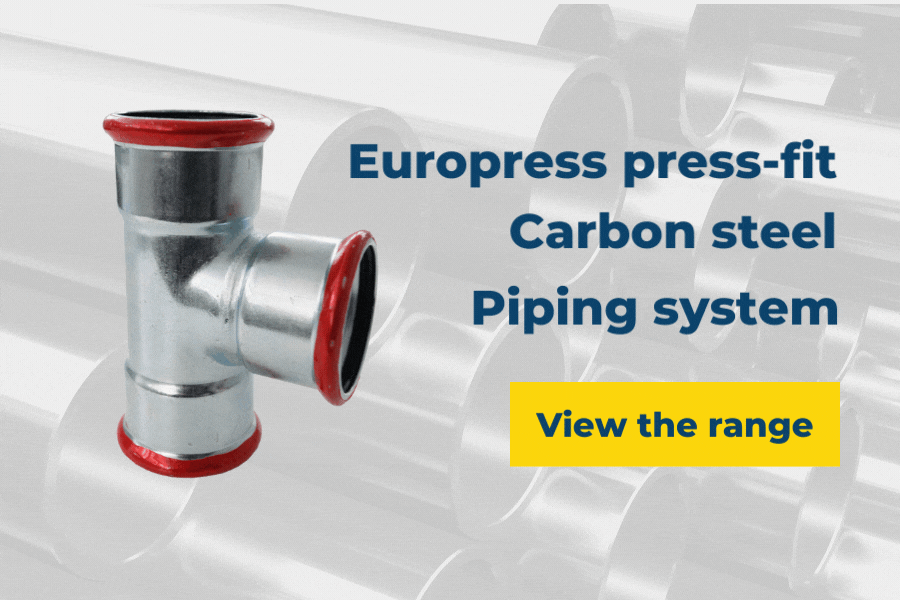
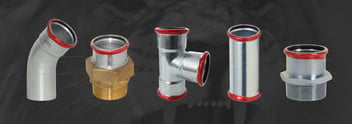
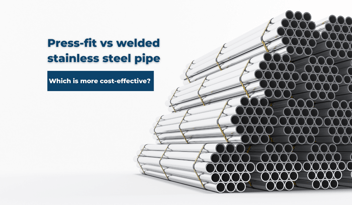
.png?width=352&name=WW%20%20Blog%20headers%202023%20(3).png)